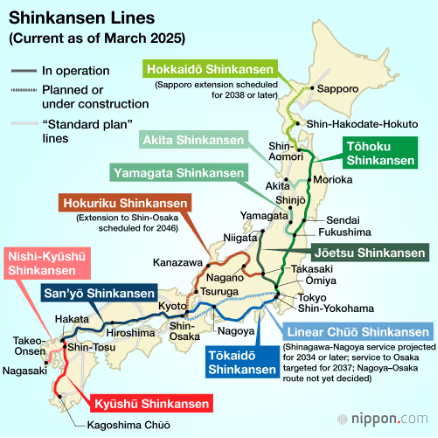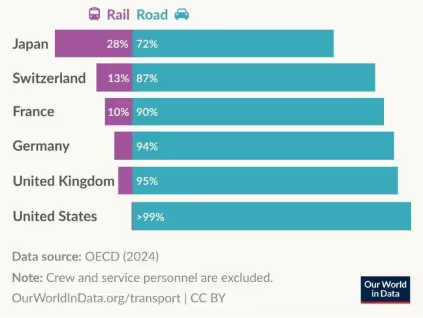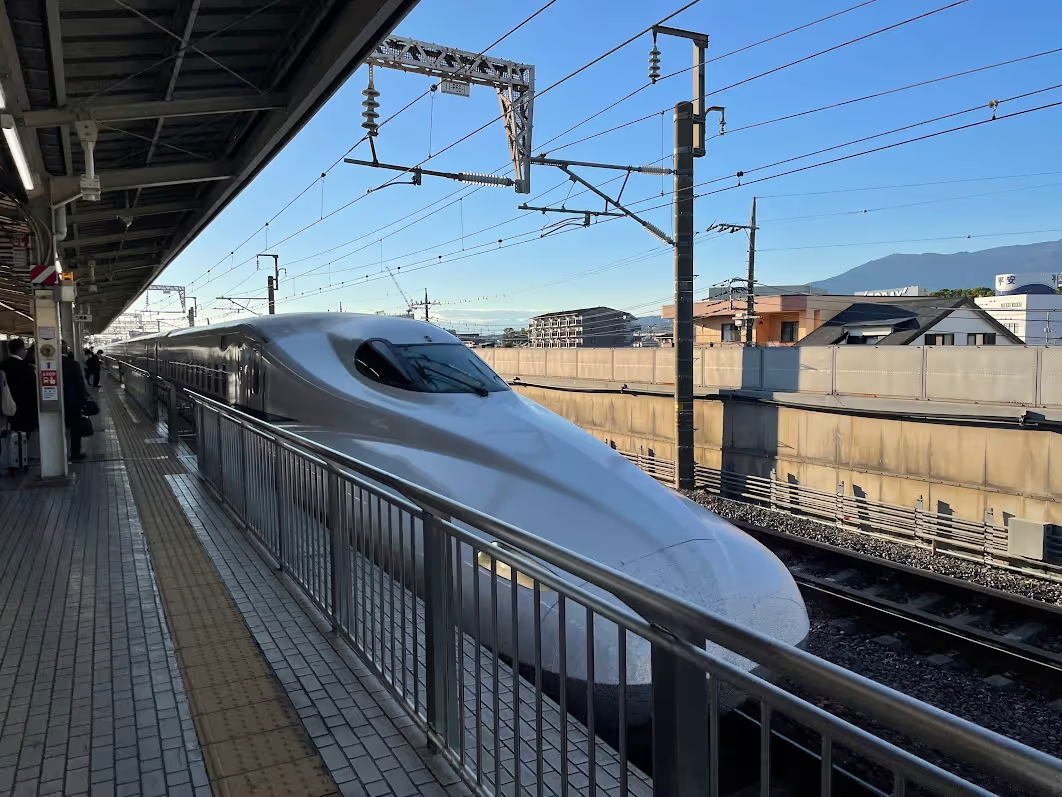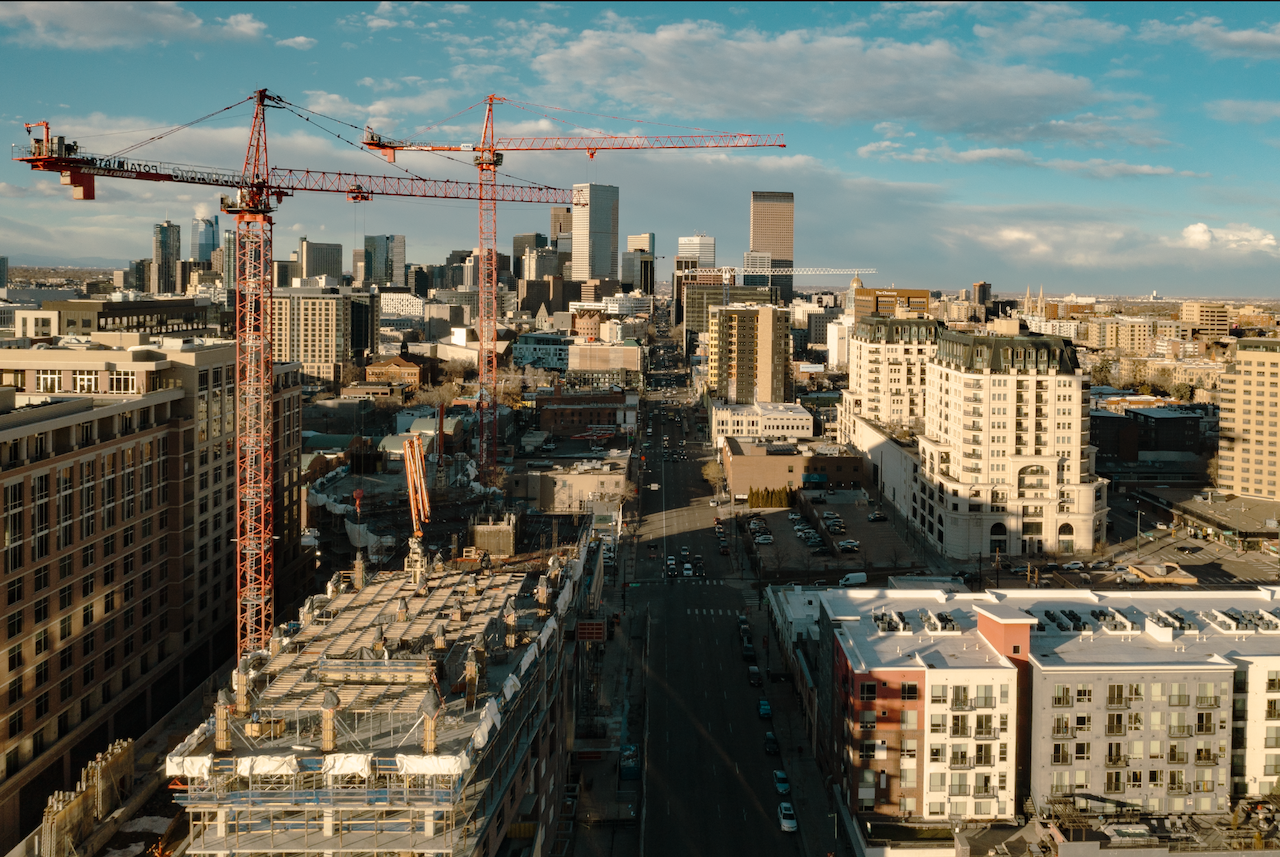Amtrak High Speed Rail Takes the Next Step
Last month, Amtrak launched their NextGen Acela on the Washington DC to Boston route, the new standard for Amtrak high-speed rail in the United States. With a top speed of 160 mph, the trains are 10 mph faster than previous stock. They are also larger yet weigh less and have 27% more seats.i The tilt system delivers a smoother ride with other new amenities for passengers such as free Wi-Fi and power outlets, more spacious and comfortable seating, and gap fillers at the platforms for easier boarding.
Learning about the new launch was exciting for me. I’ve long waited for high-speed rail to come to the US. There is an incredible promise for making travel easier, more affordable and accessible, and more environmentally friendly. Rail is much easier to decarbonize than aviation or road travel. With its inherent energy efficiency, this option is central to discussions on sustainable transportation and rail decarbonization.
Japan’s Shinkansen High-Speed Rail System
When I traveled to Japan, I took the Shinkansen high speed rail, as any good transportation planner must, and was incredibly impressed with how quick and easy it was. I took trains from Fukuoka in the south of Japan to Tokyo and the journey times were truly impressive! What would have been 3.5 hours to drive from Fukuoka to Hiroshima, took only 1 hour on the Shinkansen. From Hiroshima to Osaka, the 4-hour car journey took only 1.5 hours by train. And most impressively, the nearly 7-hour car journey from Osaka to Tokyo took just over 3 hours.

These quick durations are achieved at a 200-mph top speed, though actual speed varies between the lines. The lines run on dedicated tracks separate from conventional rail, allowing them to move faster. These dedicated tracks are designed to be straight, welded continuously to eliminate gaps, and with a wider gauge than traditional rail to increase stability.
High Speed Rail Ridership: U.S. vs. Japan
In Japan, there are nine Shinkansen high-speed lines running from the very bottom to nearly the top of the country. To add to these major trunk lines, there are hundreds of intercity regional rail lines connecting thousands of Japanese cities and towns.
In contrast, though the United State is 25x larger than Japan, Amtrak has approximately 30 routes, serving 500 destinations across the country. Another way to visualize this, Japan is about the size and even roughly the shape of California. Could you imagine nine high speed rail lines and hundreds of regional lines connecting all the parts of California? That’s the current situation in Japan.

And Japan has the ridership to show for their incredible investment. Rail serves some 28% of all passenger travel in Japan as of 2021, whereas in the United States more than 99% of passenger travel is by road.ii
In 2024, JR Central had 158 million Shinkansen riders and 375 million conventional rail riders.iii JR West had 81 million Shinkansen riders and 1.7 billion conventional rail riders.iv And the most mind boggling, JR East had 4.8 billion riders across Shinkansen and conventional rail.v
In 2024, Amtrak had a banner year, reaching a record ridership of 32.8 million passengers, a significant increase from 22.9 million in 2022 and 28.6 million in 2023.vi While ridership in the US is much lower than in Japan, it’s exciting to see ridership on Amtrak grow by nearly 15% in only one year.
High Speed Rail as an Alternative to Air Travel
To highlight the promise that high speed rail could bring to the United States, I want to talk about two of the busiest flight routes in the US - New York City to Chicago and Los Angeles to San Francisco.
Annually, approximately 1.4 million people fly between NYC and Chicago with roughly 1,400 flights operated weekly between the two destinations.vii A direct flight takes about three hours in the air, but when you add approximately one hour of travel time to reach each airport from downtown and the need to arrive two hours early for a domestic flight, you’re looking at a journey time of about seven hours. A true high-speed rail, operating at 200 mph, could reach Chicago from NYC in as few as four hours direct or five hours with a couple stops, though it could be more depending on the route, stops, and actual speed achieved. This would be a one seat ride from downtown to downtown. The current train journey takes about 19 hours on Amtrak’s Lake Shore Limited, which travels up New York towards Albany before heading over across the shoreline of the Great Lakes.
Similarly, some 1.3 million passengers fly annually between LAX and SFO.viii The flight takes just 1.5 hours but adding the approximately 30-minute travel time from the airport to downtown and the need to arrive two hours early, that brings the journey to about 4.5 hours. A true high speed rail line could achieve the journey in under three hours with a one-seat ride downtown to downtown.
The Future of High-Speed Rail in the U.S.
The future of high-speed rail isn’t without its challenges. The line between Los Angeles and San Francisco is under construction but has faced serious setbacks due to funding cuts and missed deadlines. The hope is to begin service sometime between 2030 and 2033.ix Amtrak is also facing challenges with aging rails, tunnels, and electrical infrastructure, in addition to shared track with freight and conventional rail lines.
Though the line between LA and San Fran faces setbacks, the line from Las Vegas to Southern California, Brightline West, is under construction and projected to begin service in 2028. This route will use electric trains with a speed of 200 mph, matching international standards. While it does not go downtown to downtown, it will link with the LA Metro, allowing access to various parts of Los Angeles.
Imagine the possibility of having routes to your favorite destinations accessible via high-speed rail. It would not only be better for the environment, but better for the pocketbook. Plus, this is an amazing choice for anyone looking to travel more comfortably. Not to knock aviation, I love a plane trip, but I have to admit that train seats are often larger and more comfortable.
Imagine how it would impact your vacation, business, or visiting family and friends. Where would you go? How would you spend your time on the train? How cool would it be to see some of the amazing landscapes you might pass through?
I’m excited to see it develop in the US, and I hope to one day take trains to explore the many amazing destinations our country has to offer.
How Wonderstruct Supports Rail Development
Do you want to know more about how we support the development of rail in the US? Interested in our services for GIS and mapping? Get in contact with Jaime Phillips at jaime@wonderstruct.co
Subscribe to receive the latest columns posts to your inbox every week.


